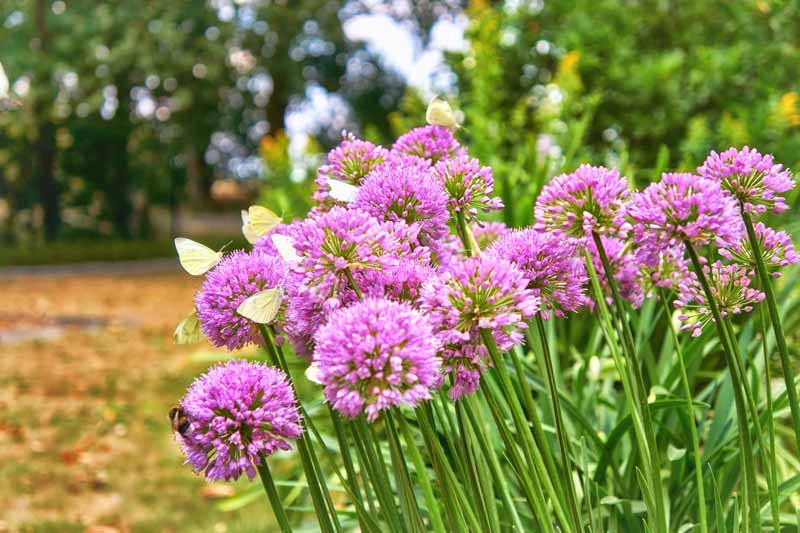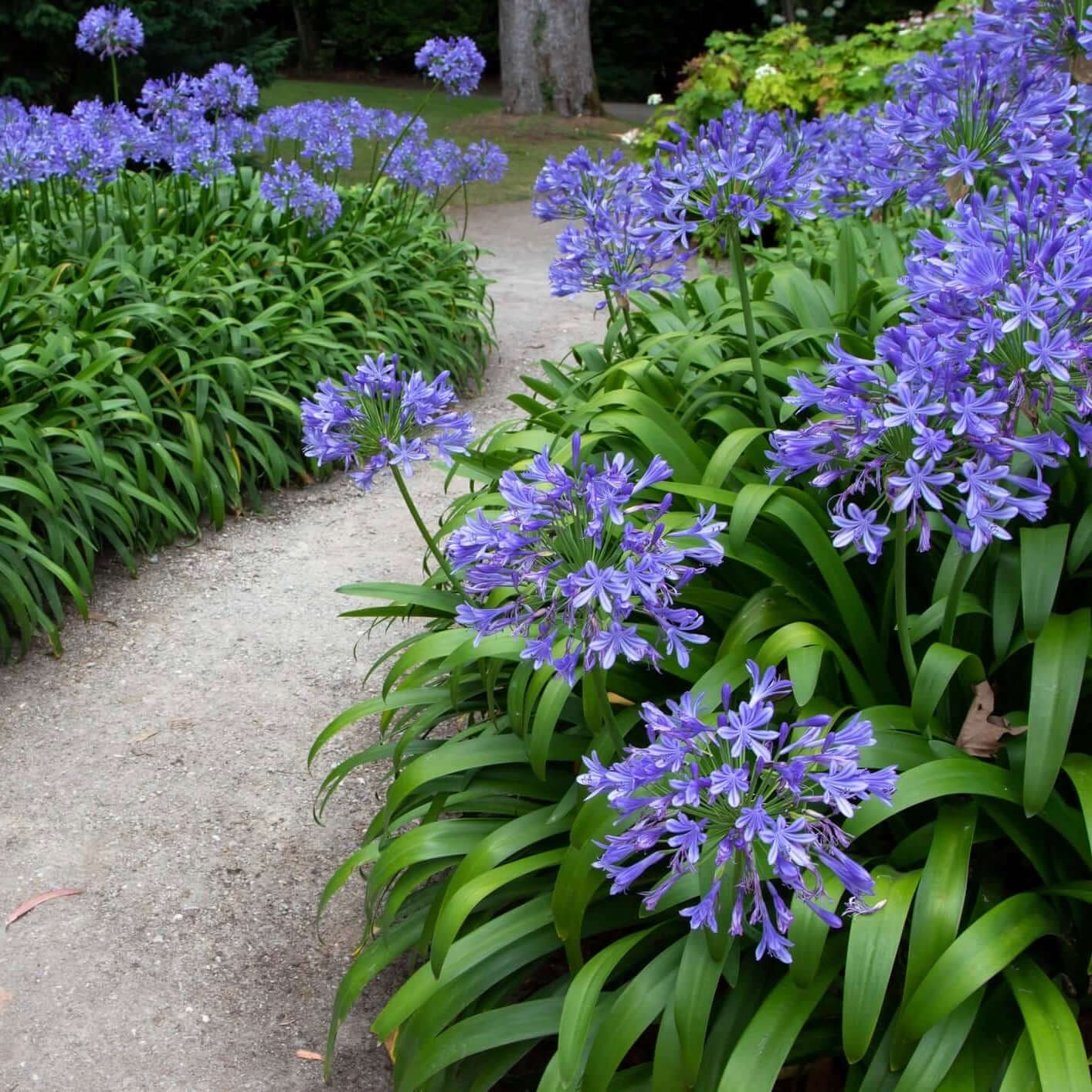Agapanthus Treatment Tips for Lush and Vibrant Flowers
Wiki Article
Letting Loose the Secret to Effective Agapanthus Cultivation: Tips and Tricks for a Flourishing Garden
In the realm of horticulture, growing agapanthus efficiently needs a strategic method that incorporates various aspects of plant treatment. With careful interest to information, one can open the tricks to nurturing these stunning blooms, resulting in a yard that thrives with appeal and vibrancy. By recognizing the nuances of agapanthus cultivation, one can create a setting where these plants grow and bloom perfectly. In the following conversation, we will certainly check out necessary suggestions and techniques that will certainly guide you towards a growing agapanthus garden, using insights into ideal techniques, dirt conditions, sprinkling techniques, and a lot more.Planting Agapanthus: Finest Practices
When growing Agapanthus, correct dirt prep work is essential for making certain effective development and advancement of these gorgeous flowers. Agapanthus, generally called Lily of the Nile or African lily, prospers in well-draining dirt with a slightly acidic to neutral pH level - Agapanthus. Before planting, it is important to change heavy clay soils with raw material such as garden compost or peat moss to boost drain and provide necessary nutrients for the plantsTo grow Agapanthus, pick a location that receives full sunlight to partial color, as this will certainly promote healthy and balanced growth and plentiful flowering. Dig a hole twice the diameter of the plant's origin ball and put the Agapanthus at the same depth it was formerly growing. Delicately backfill the hole with dirt, weighing down strongly to remove any type of air pockets around the roots.
Water the freshly planted Agapanthus extensively and remain to maintain the soil equally moist, particularly throughout the plant's active growing period. Agapanthus. Using a balanced plant food once a month can additionally support the plant's growth and blooming. By following these finest practices for planting Agapanthus, you can produce a stunning display screen of these fascinating flowers in your yard
Ideal Soil Issues for Agapanthus
For ideal development and flowering success of Agapanthus plants, ensuring the dirt conditions are suitable is vital. Agapanthus chooses dirt that is abundant in nutrients, so integrating a balanced fertilizer during the expanding season can promote healthy and balanced development and vibrant blooms.
Watering and Fertilizing Tips
To ensure healthy and balanced growth and lively flowers, proper watering and feeding strategies are crucial for successful Agapanthus farming. Agapanthus plants benefit from normal watering, specifically during the growing period.When it comes to feeding Agapanthus, a well balanced plant food with equal components nitrogen, phosphorus, and potassium can be used in the springtime to advertise healthy and balanced development and flowering. Slow-release fertilizers are optimal for giving nutrients progressively over a prolonged duration. Prevent over-fertilizing, as this can lead to too much vegetation development at the cost of blossoms.
Additionally, including natural issue like compost into the dirt can enhance nutrient you could check here degrees and improve soil framework, aiding in the general wellness of the Agapanthus plants. By complying with these watering and feeding pointers, garden enthusiasts can ensure their Agapanthus plants flourish and generate stunning screens of blossoms.
Trimming and Deadheading Strategies
Correct trimming and deadheading methods play a crucial role in maintaining the wellness and aesthetics of Agapanthus plants, enhancing the necessary practices of watering and fertilizing for successful cultivation. Pruning Agapanthus entails eliminating spent flower heads, yellowing or dead leaves, and overall shaping of the plant to advertise better development. Deadheading, the procedure of removing discolored flowers, not just boosts the plant's look yet likewise urges further flowering.When deadheading Agapanthus, it is advisable to snip off the blossom stem at the base using sharp, clean shears. This procedure reroutes the plant's power from seed production back into origin and vegetation development, promoting a much healthier and more durable plant. Routine deadheading browse around this site can extend the blooming duration of Agapanthus and stop self-seeding, which can cause overcrowding.
In regards to pruning, Agapanthus usually gain from a light trim after blossoming to clean the plant and urge fresh development. Reducing back the spent blossom stems and eliminating any type of broken or dead vegetation helps preserve the plant's vigor and overall look. However, it is crucial to prevent cutting into the crown of the plant, as this can weaken its wellness.

Protecting Agapanthus From Vermins and Diseases
Implementing effective parasite and condition management strategies is crucial to safeguarding the wellness and vitality of Agapanthus plants in farming. One usual insect that influences Agapanthus is the Agapanthus borer, a caterpillar that tunnels right into the plant, causing damage to the blossoms and leaves.In enhancement to parasites, Agapanthus are at risk to diseases such as root rot and fungal fallen leave areas. By staying attentive and attending to bug and illness problems without delay, garden enthusiasts can aid their Agapanthus prosper and flourish.

Verdict
To conclude, effective growing of agapanthus requires proper planting strategies, ideal dirt problems, adequate watering and fertilizing, normal pruning and deadheading, and protection from illness and insects. By following these ideas and tricks, gardeners can guarantee a prospering yard full of lovely agapanthus flowers. Agapanthus. Remember to maintain regular treatment and focus to detail to advertise the health and wellness and long life of these spectacular plantsWhen growing Agapanthus, correct soil prep work is important for guaranteeing effective development and growth of these attractive blossoms.Water the recently grown Agapanthus completely and continue to keep the soil equally moist, particularly during the plant's energetic growing season.For optimal growth and growing success of Agapanthus plants, ensuring the soil conditions are perfect is vital. When transplanting or planting Agapanthus, ensure the soil is well-prepared to supply the necessary foundation check it out for the plants to develop themselves effectively. One common insect that influences Agapanthus is the Agapanthus borer, a caterpillar that tunnels right into the plant, creating damages to the blossoms and leaves.
Report this wiki page